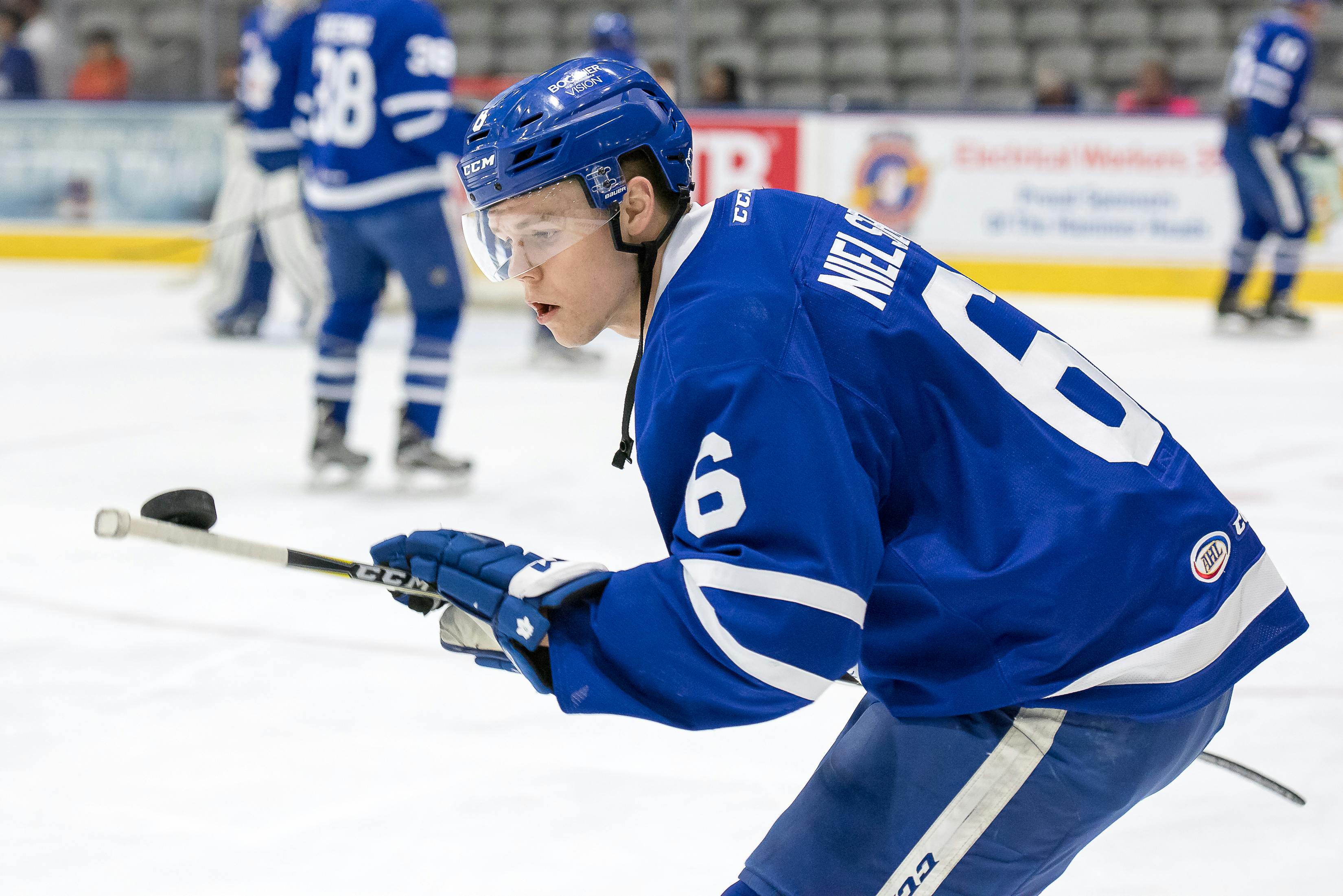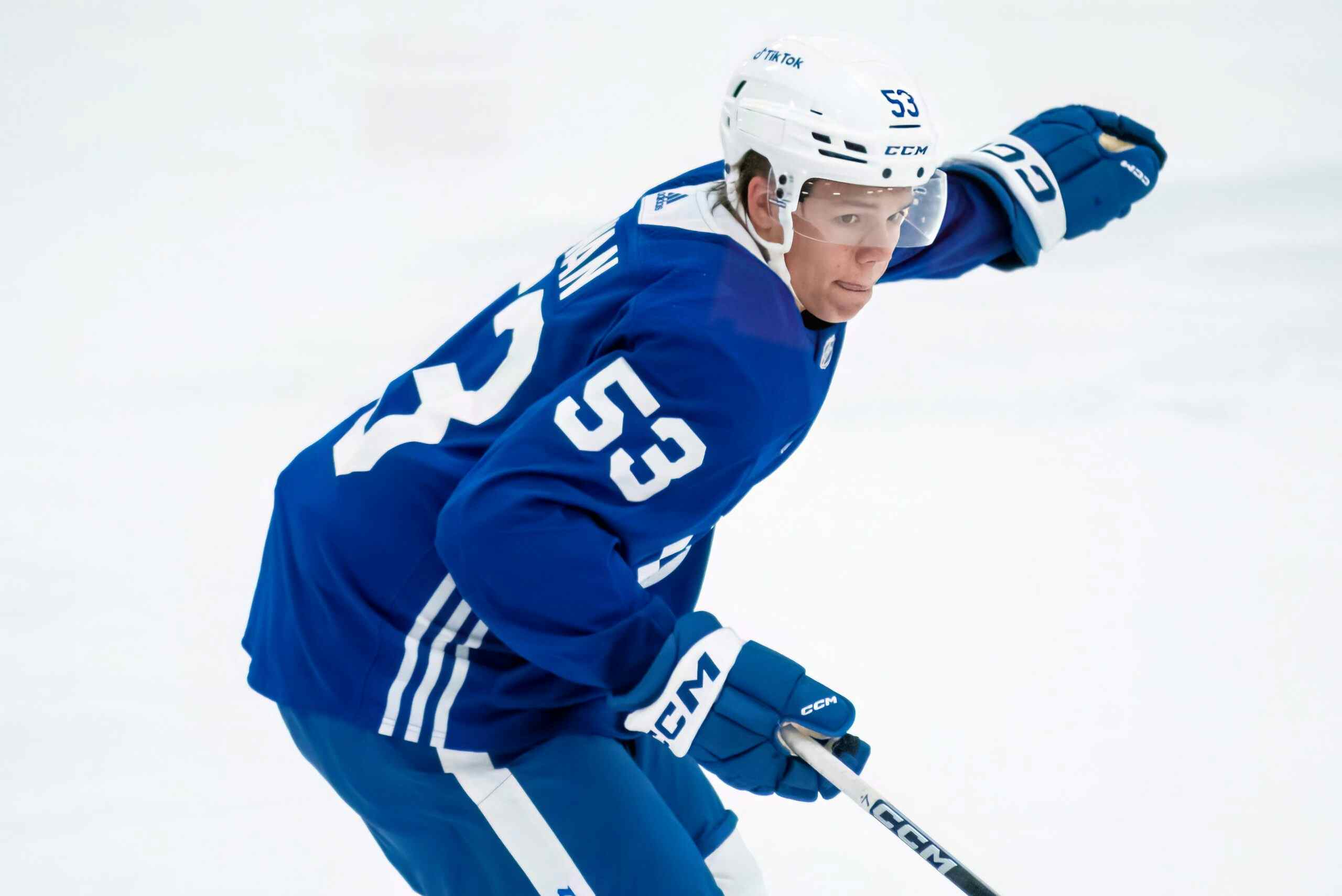Andrew Nielsen: actually good?

Defenceman Andrew Nielsen had a big year in his D+1 season with the WHL’s Lethbridge Hurricanes, registering 18 goals and 70 points in 71 games after being drafted 65th overall by the Maple Leafs in the 2015 NHL draft.
He then went on to crack the Toronto Marlies in his D+2 season (aka this past season, aka 2016/17) where he once again scored at a high rate. He’s also been labeled as a bit of a liability defensively and seems to be thought of as a “power play specialist,” at this point. The latter may be true to some extent, as 20 of Nielsen’s 39 points were recorded on the power play, but it’s interesting to note that ten of his 14 goals occurred at even-strength, which was a tie for second among AHL defencemen.
Nielsen also had a relatively high shooting percentage for a defenceman at even-strength at 7.4% which was highest among Marlies defenders and 17th among AHL defenders with 20+ games played. An above average shooting percentage is obviously less repeatable for a defender than a forward due to them shooting from further distances on average, so it’s likely that Nielsen will regress in the shooting percentage department next year, but the man can shoot.
Nielsen also ranked second among Marlies defencemen in rel.GF% at +7.2% and the player ahead of him was his most common defence partner, William Wrenn, at +8.1%. Now, using on-ice goal differential to evaluate a player’s impact is suboptimal due to goals being so heavily influenced by variance, but we don’t have shot metrics like we do for NHL players, so I’m using the best tools I have to work with.
The topic that sent me down this “how good is Andrew Nielsen?” rabbit hole is the praise Travis Dermott has been receiving for his play with the Marlies this year. James Mirtle of the Atheletic has been singing Dermott’s praises, mentioning on a couple of occasions that he has a chance to make the Leafs next year and he seems to be getting much of these reviews from people inside the organization. Nielsen is never mentioned in the same conversation as Dermott, despite them being the same age and Nielsen producing at a slightly higher rate. Every time I’ve asked around for an explanation I’ve received an answer somewhere along the lines of “Nielsen is terrible defensively/at even-strength and Dermott is well-rounded.”
I didn’t watch as many Marlies games this past season as I had the season before, so I’m not going to argue with the scouting reports that he has some things to shore up on the defensive side of his game. That said, Nielsen’s alleged defensive deficiencies didn’t show up during his rookie year in the goal differential department. Below are both defender’s even-strength statistics from Matt Pfeffer’s website.

The even-strength points per game aren’t much different, but eight of Dermott’s 13 5v5 points are secondary assists, which are virtually just noise, while ten of Nielsen’s 19 5v5 points are goals. Another thing that stands out to me is Dermott’s low goal production. His 3.1% conversion rate is really low, but looking at his three OHL seasons he never had more than eight goals in a season, so don’t think it’s a stretch to assume Nielsen is much better shooter than Dermott. The two also had similar WAR rates by Pfeffer’s model (.032 per GP for Dermott vs .034 per GP for Nielsen), which takes goal differential and attempts to adjust it for QoT and QoC. The equation for his WAR is: ((GF% – QoT GF% + QoC GF% + .5) – replacement GF%). Unfortunately, penalties aren’t taken into account for this model because penalties drawn aren’t publicly available so you aren’t able to weight penalty differential. Nielsen and Dermott could both stand to take less penalties, with Nielsen averaging 1.1 PIMs per game and Dermott averaging 1 PIM per game. The concerning thing for me here is that Nielsen has a history of racking up penalties, posting 1oo+ PIMs in both of his two seasons in the WHL. Dermott’s highest was 65 in his final year with the Erie Otters. According to hockeyfights.com, both players had two fights this season, which accounts for ten of those penalty minutes. They’re both generally physical players, but they could both probably stand to take a few less penalties. I’m also curious if the high PIMs for Nielsen over the past three seasons is partially a result of his alleged bad defensive play/decision making/skating.
I would also guess that Nielsen had a pretty high on-ice PDO this past season, which also isn’t publicly available for AHL players, judging by both his 7.4% 5v5 conversion rate (10.4% all situations) and Wrenn’s 5v5 shooting percentage (7.3% for Wrenn) compared to the other defender’s on the team. Mirtle also pointed out to me that Nielsen had a really tough go of things in the playoffs. He posted one goal (on the power play) and three assists while racking up 24 PIMs in 11 games. He was also a -13 while the only other minus player on defence was Rinat Valiev at -6 (remember that I want to vomit when forced to use +/-, but this is all I have.) Dermott had a solid playoffs, registering five points and 23 shots on goal in 11 games while only taking one minor penalty. I would guess that this is a major reason for Dermott receiving very positive year-end reviews while Nielsen received, uhm, mixed reviews.
Ultimately, if the question is “how big is the gap between these two 20 year old LHDs at this point?” I don’t have a definitive answer, but I think Nielsen deserves a lot more credit than he’s been given following his productive rookie season.
Recent articles from dylan fremlin





